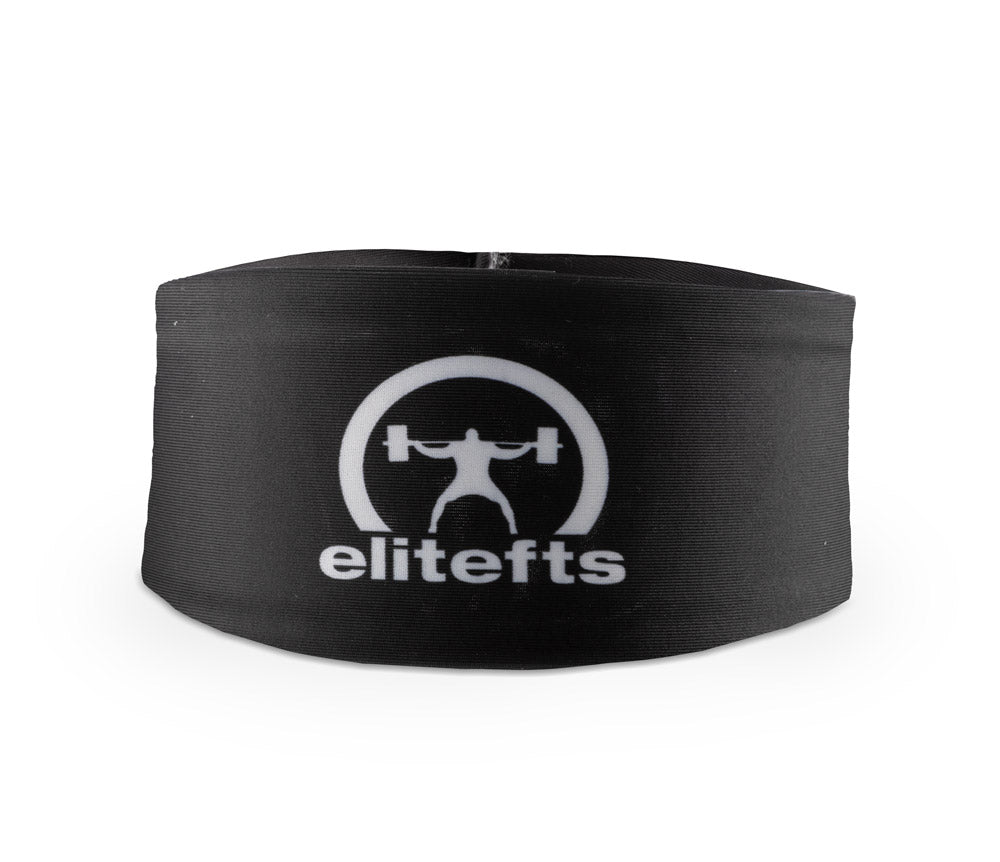If you’re a powerlifter and haven’t heard of the dynamic effort method, I'll be surprised. Even when I began lifting and competing, one of the early training programs I stumbled upon was Louie Simmons’ Westside system. If the dynamic effort method is somehow a new concept to you, it can be summed up as lifting lighter weight as quickly and explosively as possible. This is also known simply as speed work.
RECENT: Building the Bench, Piece by Piece
Why would we train this way, you might ask? Well, we train this way because lifting explosively with lighter weights increases force development — AKA, how much total force you can put into the bar and how quickly you can do it. Neuromuscular adaptations such as motor unit recruitment and rate of contraction take place when we train like so. This is a great way of getting stronger and you don’t even need to gain muscle! You just need to train the muscle you have to work more efficiently. This is an ideal way to train for an athlete trying to stay in a certain weight class, but is also excellent for a big powerlifter trying to put as much force into the bar as humanly possible.
Louie Simmons lays out his method by using about 55-65% of a lifter's max. Squats are done for two reps, bench for three reps, and deadlifts for one rep. However, one to three reps for any lift is ideal for nine to 12 sets. He adds what we call “accommodating resistance” to the exercise via attaching bands or chains to the bar. What this does is allow us to explode quickly through the weakest portion of the lift and keep that explosiveness through the strongest portion of the lift. For example, on the bench press using bands, you are lifting approximately 55-65% of your max when the bar is on your chest and about 75-85% right at lockout when the bands add tension.
I always tell my clients that if they want to see a perfect representation of what speed training looks like in action, go do a quick search of
“Westside Barbell dynamic effort” on YouTube. There is plenty of awesome content that gives you a bird's eye view into why these lifters are some of the strongest on the planet. THAT is how speed work should be done. It’s a fast workout with explosive reps.
All too often I see mistakes committed by lifters in regard to speed work. Commit too many of the mistakes I’m about to present to you and your training will result in zero results. You certainly won't be getting the desired effect of optimizing force development. If you’re a lifter running a Westside Barbell conjugate template or utilize speed work in your training, this is a must read for you!
Without further ado, here are the five biggest mistakes I see regarding a lifters speed work.
1. Going Too Heavy
This is the single biggest mistake I see. Going too heavy defeats the purpose of speed work because heavy weight is not going to move quickly. There is a difference between moving weight easily and moving weight quickly. Just because it doesn’t feel straining doesn't mean it’s moving quick enough to qualify as speed work. Speed work is meant to be done with light weight for the exact reason of keeping speed the goal. Yes, 55-65% of your max is going to feel light, it should be! The adaptations you are trying to make using this style of training are accomplished through the use of lighter weights, not heavier.The biggest obstacle as a coach is convincing a client to stay light enough with the weight so that speed work is still “speed” work. The biggest obstacle as an athlete is fighting the urge to move up in weight because we get in the mindset of more weight equals greater results. This is a mindset we need to break free from if we’re going to succeed with our speed work. Remember, we are not training for more muscle — we are training the nervous system.
Sometimes this mistake is made inadvertently. When taking 55-65% of a one-rep max, you need to make sure that one-rep max is legitimate. By legitimate, I mean the lift has been done to the standards of a successful lift in powerlifting. You aren’t taking your one-rep max in the gym where your butt was off the bench and your friend was helping you up. You’re taking the successful lift you did at your last meet or the lift you did that looked technically proficient. If you use that ugly lift as your one-rep max number then your speed work might not be so speedy once the chains and bands get added on. Suddenly you’ll have closer to 95% at the top of the lift. Make sure that your one-rep max number is a clean lift and you shouldn’t have issues.
2. Not Lifting Fast Enough
How do you know if your speed is “fast enough?" Without an experienced coach's eye, it can be difficult to tell, especially if you haven’t developed a good personal awareness of your training yet. A good rule of thumb is that each rep should be completed within a second. If each rep looks or feels like it isn’t being completed within a second's time, you probably need to lighten the weight.Don’t let the weight dictate your speed; let the speed dictate the weight. If it’s moving slow that day, lighten up. If it’s moving lightning fast, then good, keep it that way.
Like I mentioned earlier, look up some of the speed training at Westside Barbell. If you’re not sure how fast you should be lifting, well that is it right there. Those guys are explosive! Each and every rep you are putting 110% effort into the bar. It’s easy to let up on the intensity when the weight isn’t that heavy, but I urge you to put more into the lighter weights. If you bench 400 and have 225 on the bar, try your best to put over 400 pounds of force into that bar each and every time. I promise if you do this you will finally reap the results you sought out when beginning this type of training.
3. Failing To Improve Technique
One of the hidden benefits of speed work is the ability to correct technical issues. Since the load on the bar is lighter, it gives you a chance to work on lifting technique. This is not something you’re able to do with heavier weight because the strain is too great and often times technical breakdown will occur. Consider it another blemish on your speed training if you don’t go into it with an attack plan of what you want to work on technically.I tell clients, "Technique first, speed second." Lifting fast isn't going to help you if you look ugly doing it. Treat your lifting like any other sport. A baseball player is going to practice his swing time and time again to make sure he has great technique. This in turn, makes him a better baseball player. He didn't swing until his arms fell off, he just simply practiced his approach. Well, a lifter should continue to practice their approach as well. You can only make technical changes when the weight is light enough to manipulate it without issue.
Make corrections to technique one at a time. I’m sure we could all think of three things we’d like to improve on with a certain lift, but if you go into training trying to think about correcting all three things at the same time, you won’t get anywhere. You need to have one correction as the intent of the day and improve upon that one thing. Once you improve that one thing you can begin working on the next. Trying to master all three things at once will have you spinning your wheels and getting frustrated. Remember: technique first, speed second.
4. Too Much Rest
Speed work is meant to be done quickly. This means not only the lift itself, but the workout. I’m talking 30 seconds or less of rest in between sets. Remember, this training is very different from your average powerlifting volume workout where you purposely rest longer periods in order to recover fully. Handling 55-65% is not very taxing on the muscles, but remember that we are not training muscles. We are training the nervous system. There is no need for a full recovery here, just keep the nervous system primed up and firing for every set.A big issue is lifters resting too long between sets. These lifters will not benefit fully from the speed work and will feel like they did not get much out of the workout. If you’re training alone there is no excuse — finish a set and get back in there 15-30 seconds after. If you’re training in groups, make sure once one lifter finishes their set that the weight gets changed quickly and you jump right in. There is no downtime!
Another hidden benefit of speed work is increasing work capacity, the ability to recover quickly between bouts of exertion and maintain a higher work rate for a longer period of time. You can think of this as increasing the size of your gas tank. More work capacity allows you to handle more training in less time, which is key. If you move through speed training too slowly you completely miss this aspect of training. The idea is to challenge your body to recover quickly. If you aren’t stressing shorter rest periods, this cannot happen.
5. Excessive Accommodating Resistance
People who see bands and chains for the first time tend to go a little crazy. They pile on thebands and
chains without regard to what is trying to be accomplished. With good reason: more is better, right? Wrong! Adding unwarranted bands and chains is not helping you get stronger or more explosive; it can actually hold you back.
The reason accommodating resistance works so well is because it allows you to explode into the lift quickly and provides that extra resistance at the end to force you to keep driving through the weight. When you have a huge discrepancy between bar weight and added resistance then you will be transitioning between two extremes, which, will in turn, create a poor training effect.
So how much accommodating resistance should you add? About 15-20% is a good rule of thumb. So for a 400-pound bencher, that would be 60-80 pounds of resistance. If you start with 65% bar weight and add 15% band tension it will put you at 80% at the top of the lift. So taking that example of the 400-pound bencher, 260 pounds would be on the bar and an additional 60 pounds added throughout the lift for 320 pounds at the top.
Don’t be that person in the gym that just throws bands and chains on the bar willy nilly. There is science behind accommodating resistance for speed work. It works, but only if you set it up correctly. When in doubt, more is not always better. I have coached lifters who will even bench with a half chain if need be because that’s what their strength levels allow. Remember, just enough to add that extra resistance at the end. You want the lift to be explosive!
Speed training can be such a valuable tool for a lifter. Not only are you becoming a more explosive lifter but you’re becoming a more technical lifter as well. There are three main ways of getting stronger:
- Gain muscle.
- Elicit neuromuscular adaptations.
- Improve lifting technique.



















































































